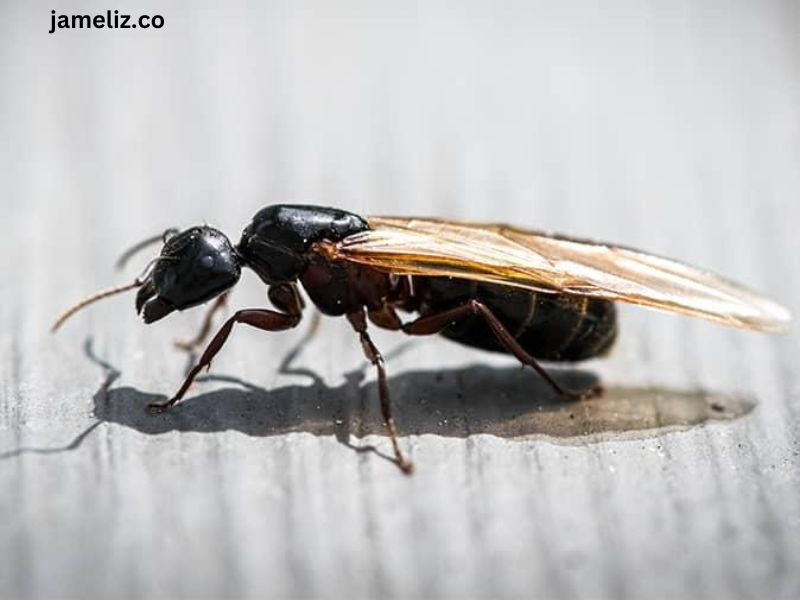Carpenter ants are one of the most common household pests that can cause significant damage to wooden structures. Unlike termites, carpenter ants do not consume wood; instead, they excavate it to create their nests. If left unchecked, a carpenter ant infestation can lead to serious structural damage in your home. This article will provide you with a comprehensive guide on how to identify, prevent, and eliminate carpenter ants effectively.
Understanding Carpenter Ants
Identification
Carpenter ants can vary in size, but most are about 1/4 to 1/2 inch long. They are typically black, but some species can be reddish or bicolored. Carpenter ants have a smooth, rounded thorax and large mandibles that they use for excavating wood. Signs of an infestation include:
- Sawdust-like Frass: This is a mixture of wood shavings and excrement that can be found near their nesting sites.
- Hollow Sounding Wood: Tapping on wooden structures may reveal a hollow sound, indicating that the wood has been hollowed out.
- Live Ants: Seeing large black or reddish ants indoors, especially at night, can be a sign of an infestation.
Lifecycle
Carpenter ants have a complex lifecycle that includes the egg, larva, pupa, and adult stages. They typically nest in damp or decaying wood, which makes your home’s wooden structures susceptible if not properly maintained.
Prevention Strategies
1. Eliminate Moisture Sources
Carpenter ants are attracted to damp wood. Here are some steps to minimize moisture around your home:
- Fix Leaks: Repair any plumbing leaks in your home to prevent moisture accumulation.
- Improve Drainage: Ensure that gutters and downspouts direct water away from your foundation.
- Ventilate: Use exhaust fans in bathrooms and kitchens to reduce humidity. Ensure that attics and crawl spaces are well-ventilated.
2. Seal Entry Points
Carpenter ants can enter your home through small cracks and openings. To deter them:
- Caulk Gaps: Use caulk to seal gaps around windows, doors, and where utilities enter the home.
- Repair Screens: Make sure window and door screens are intact and free of holes.
3. Maintain Your Property
Regular maintenance can prevent infestations:
- Trim Vegetation: Keep tree branches and shrubs trimmed away from your home’s exterior.
- Store Firewood Properly: Store firewood at least 20 feet from your home and elevate it off the ground.
- Remove Debris: Clear away leaves, wood piles, and other debris that may harbor ants.
Detection of Infestation
If you suspect an infestation, it’s crucial to confirm its presence. Look for signs in and around your home:
1. Inspect Wooden Structures
Check wooden structures, especially those that are damp or decayed. Pay attention to:
- Sawdust Piles: Look for small piles of sawdust under wooden beams, floorboards, and furniture.
- Exit Holes: Carpenter ants create small holes in wood to exit their nests.
2. Monitor Ant Activity
Set up ant baits to monitor activity. Place them near suspected nesting areas. If ants are taking the bait, it indicates an active infestation.
Methods to Get Rid of Carpenter Ants
Once you’ve confirmed an infestation, it’s time to take action. Here are some effective methods for eliminating carpenter ants:
1. Boric Acid
Boric acid is a popular choice for pest control. It disrupts the digestive systems of ants and eventually leads to their demise. To use boric acid:
- Create Bait Stations: Mix boric acid with sugar and water to create a bait solution. Place it in shallow containers near ant trails.
- Use Caution: Keep boric acid out of reach of children and pets.
2. Commercial Ant Baits
There are many commercially available ant baits designed specifically for carpenter ants. These typically contain a slow-acting poison that the ants carry back to their colony. Follow the manufacturer’s instructions carefully for the best results.
3. Insecticidal Sprays
Insecticidal sprays can provide immediate results, but they should be used as part of a broader strategy. Apply these sprays directly to nests or along ant trails. Look for sprays specifically labeled for carpenter ants.
4. Diatomaceous Earth
Diatomaceous earth is a natural substance that can be effective against carpenter ants. It works by dehydrating them. To use it:
- Apply Generously: Sprinkle food-grade diatomaceous earth in areas where you see ant activity.
- Reapply After Rain: If applied outdoors, reapply after rain or if the area gets wet.
5. Professional Pest Control
If the infestation is severe or you’re uncomfortable dealing with it yourself, hiring a professional pest control service may be the best option. They can assess the situation, identify the nest, and apply targeted treatments.
Ongoing Maintenance
After eliminating carpenter ants, ongoing maintenance is essential to prevent future infestations:
1. Regular Inspections
Conduct regular inspections of your home’s wooden structures, especially after periods of heavy rain or flooding. Early detection can help you address issues before they become severe.
2. Continued Moisture Control
Maintain your home’s dryness by regularly checking for leaks and ensuring proper drainage. Keep an eye on areas like basements, attics, and crawl spaces.
3. Seasonal Pest Control Treatments
Consider scheduling seasonal pest control treatments as a preventive measure. This can help deter not just carpenter ants but other pests as well.
Conclusion
Dealing with carpenter ants can be a daunting task, but with the right strategies, it’s manageable. By understanding their behavior, preventing conducive conditions, and employing effective control methods, you can protect your home from these destructive pests. Remember that persistence is key, and regular maintenance will go a long way in keeping your home ant-free. If in doubt, don’t hesitate to consult a professional pest control service to ensure a thorough eradication of the problem.

